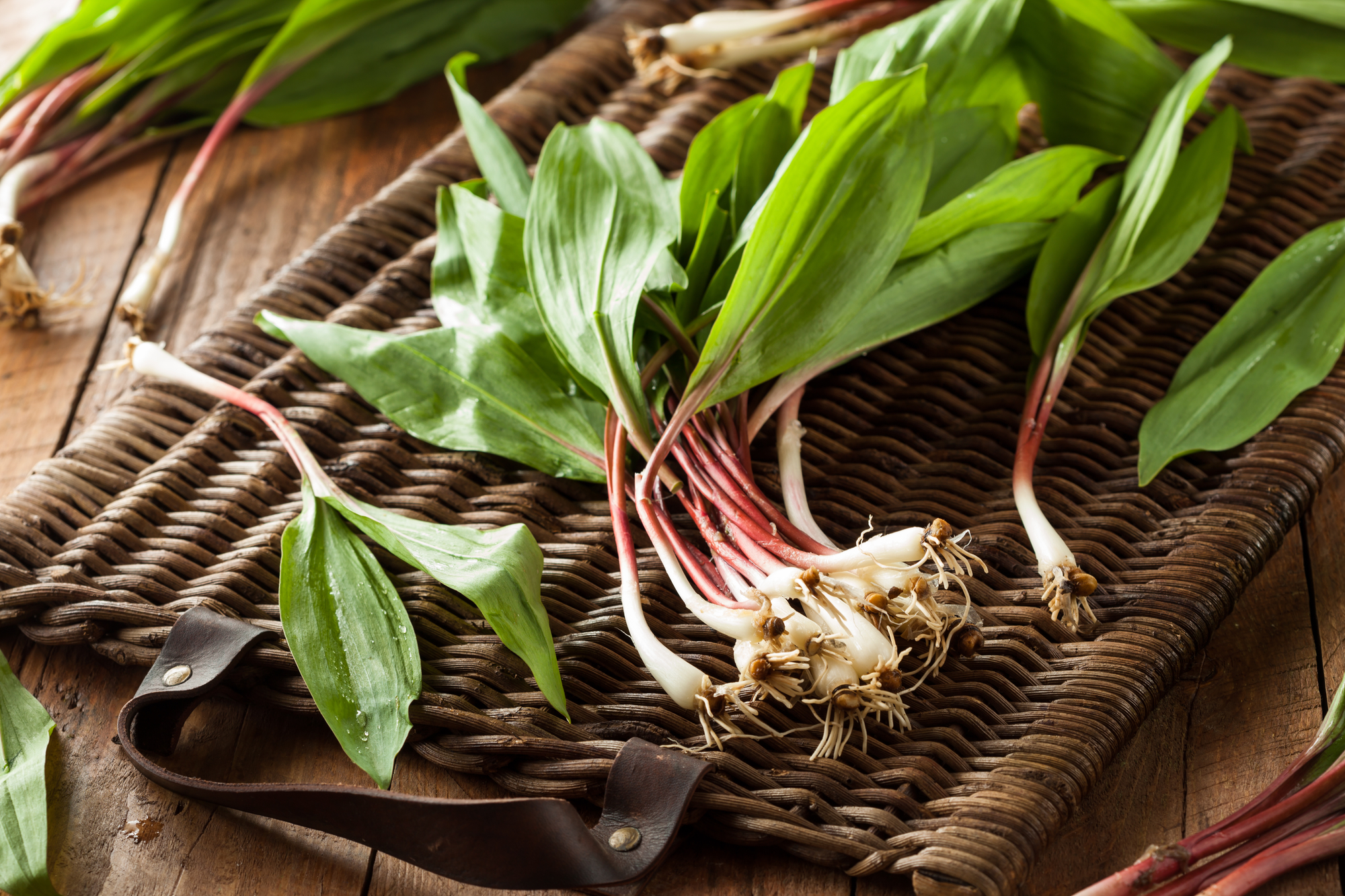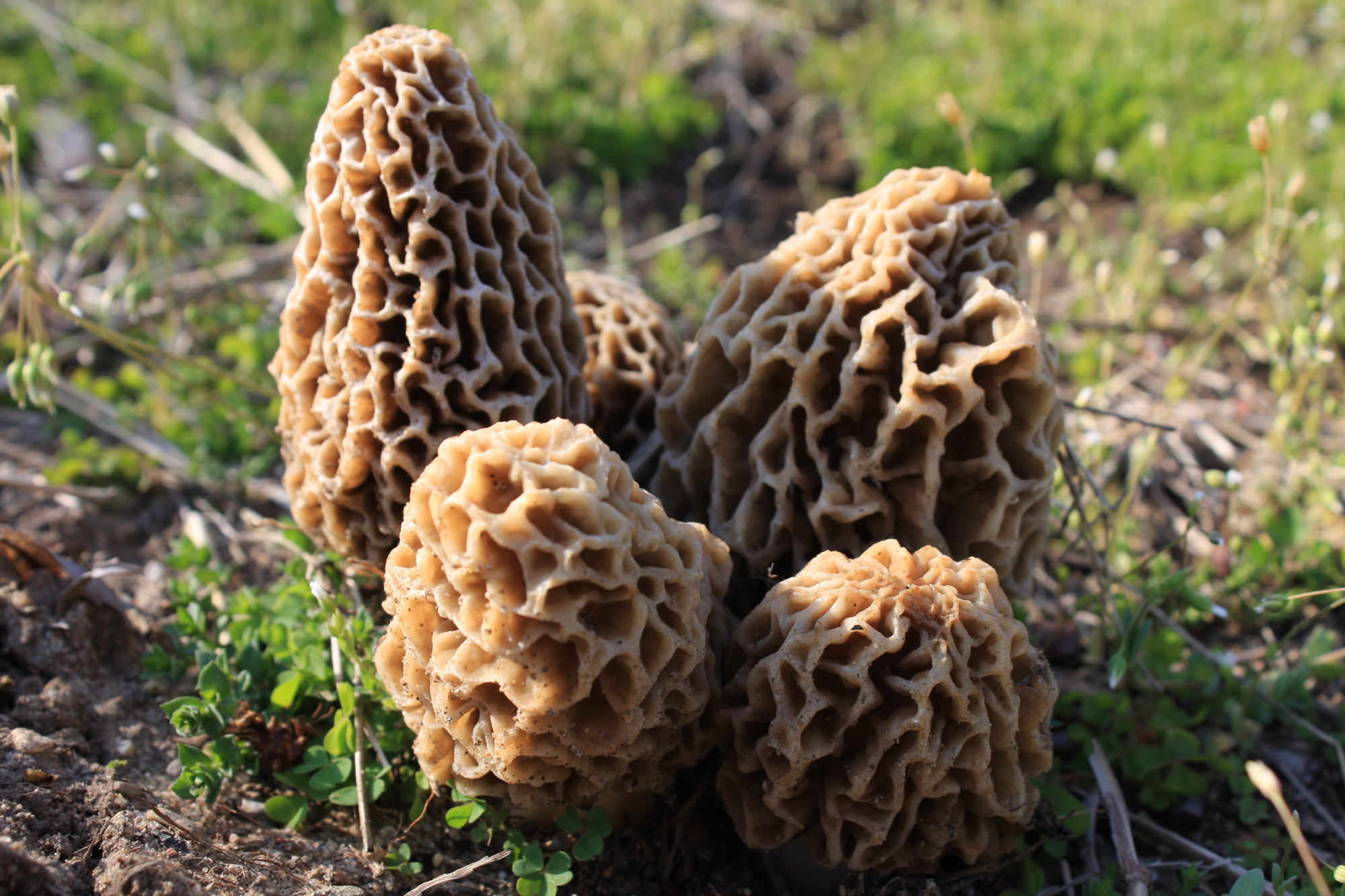 If you are like me you love to garden and each year you have a lush garden bountiful with fresh produce. I have all the usuals like tomatoes, cukes, carrots, beans, cabbage, strawberries, beets, broccoli, and potatoes. I also have the perennials… elderberries, apples, pears, peaches, nectarines, cherries, blueberries, red and black raspberries, currants, rhubarb, and asparagus. Every year I spend many hours tending to my little patch of paradise and I shop it regularly.
If you are like me you love to garden and each year you have a lush garden bountiful with fresh produce. I have all the usuals like tomatoes, cukes, carrots, beans, cabbage, strawberries, beets, broccoli, and potatoes. I also have the perennials… elderberries, apples, pears, peaches, nectarines, cherries, blueberries, red and black raspberries, currants, rhubarb, and asparagus. Every year I spend many hours tending to my little patch of paradise and I shop it regularly.
But what about the free and wild food that nature provides? Are you shopping that? If not, you should be! I spend as many hours foraging wild foods as I do tending my garden. It is a completely viable and budget friendly way to put food on the table.
Wild Foods Benefits
Foraging has lots of benefits, including healthier and more biodiverse food. Wild foods are generally free of pesticides, chemical manipulation, and genetic modification. It is also healthier for the planet to forage rather than clear land for farms, even though the farm to table movement is important. Truly local food is wild food, found in nature as was intended and as is natural. We can supplement food from our local farmers with gathered and wildcrafted foods. This adds variety and new and exciting flavors. Foraging is also a key step in greater self sufficiency. Foraging for the wild edibles in your region connects you to the land and makes it so you are always able to supplement your food supply.
Learning to Forage for Food
Check your area for classes related to foraging. I live in Columbus, Ohio and I have found many dozens of foraging opportunities. The suburb next to mine has weekly herbs walks that teach you how to find wild herbs and other wild edibles. The college in the next county over has wild mushroom hunting and cooking classes where you hunt for morels or chanterelles one week and then cook them the next week. There are local wildcrafters that often host meetups and foraging walks.
If you have no resources though you can join Facebook groups about foraging and learn from others there, even posting photos of plants and mushrooms you find and others can help you identify them. I learned to forage for ramps from a local facebook group and now they are one of my favorite foods of all time! There are also Youtube channels where experts in foraging video their adventures and teach you as they go. I HIGHLY recommend Adam of Learn Your Land!! It’s on my bucket list to travel to Pennsylvania to take one of his classes.

Get Outside and Practice
The best way to learn other than a hands on guide and teacher being with you is to get outside and experience foraging regularly. Take a field guide like Peterson Field Guides and your phone and get to exploring and learning. Want to find wild food? Put some miles on those hiking boots! Walk the woods, forests, and trails and identify as much as you can. No need to pick things right away just look, touch, and photograph. Take your photos to a local expert or an identification group online and confirm the identity of your findings. Also learn about the larger ecosystem in your hunting ground. If you are looking for mushrooms identify which other plants and trees it forms communities with. Then you can look for those plants and have more certainty when you find the “companion” edible you are looking for.
To mark spots where you “find” edibles download a foraging app. I mark all the spots via GPS where I find various mushrooms, wild berries, and other delectibles ao I can return later on or even in subsequent years. I use a latitude longitude app and a free mushroom tracker app.

Be Safe When Foraging
The good news is that the prevalence of deadly mushrooms and edibles are often highly exaggerated. Of more than 10,000 mushrooms species in the North America, less than 10 are actually deadly. Rather than being poisonous most mushrooms you are advised against eating are just poorly digested. This is why it is almost always best to cook and/or ferment mushrooms before eating. There are also lots of mushrooms that are super easy to identify, even for beginners…morels, oysters, pheasant back, wood ears, chanterelles, chaga, lion’s mane, and turkey tail for instance.
Dress smart to avoid ticks. Bring gloves, scissors, a trowel, and a first aid kit. Bring sun protection including a wide brimmed hat and long sleeves. Don’t forget water and your cell phone. A whistle is a great backup if you don’t have good cell reception.
Forage Responsibly
Forage on public lands and follow the rules. Some public lands make you download a permit before you forage. Don’t go on private land unless you have asked permission. Don’t destroy wildlife and plants if you go off trail, which you likely will. Take only what you will use, be careful not to damage the root systems of any edibles you pick, and never completely deplete an area. A good rule is to not take more than 20%. Use a mesh bag for mushrooms so that their spores will spread.

Learn When to Harvest
To have the best and most delicious experience learn when to hunt. Learn about what plants and mushrooms look like in all stages of growth. Dryad’s saddle is best when very young and small. When it has gotten large and tough it actually tastes like a saddle. Yuck. You won’t want to forage or eat wild edibles if they taste nasty so learn to pick when flavour and aroma are at their peak. Generally leaves are ideal in spring and summer, roots (like burdock, chicory or goldenseal) are edible in late fall and winter after the foliage fades, and fruits and seeds are in season in late summer and fall. This information also helps you avoid frustration. If you are looking for ramps and morels in late summer…you are going to be looking for a very long time because those are found in early spring only. When you know what grows when, your wildcrafting adventures become easier and you know what to look for.
Hopefully you can use these tips to get started. It all starts with a few casual walks in your area…get started and see what you can find!



